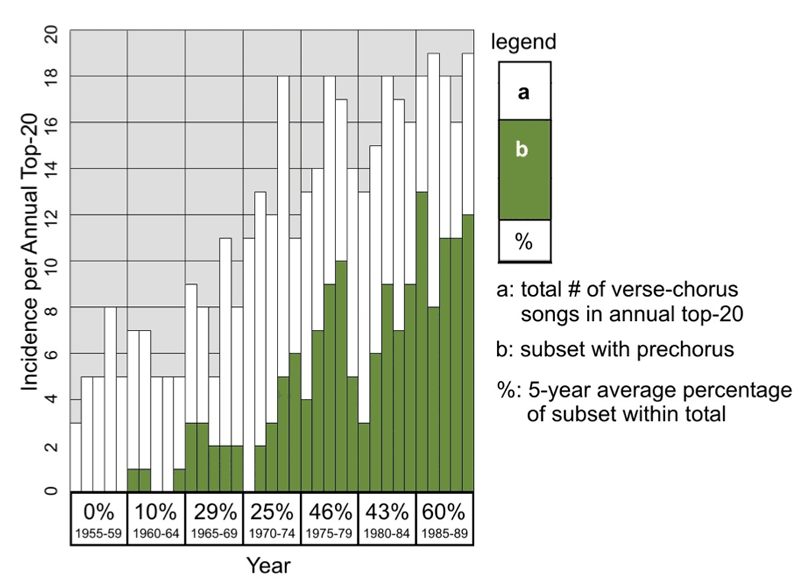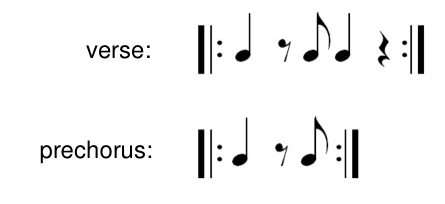
Until the 1960s songs usually alternated between verses and choruses, where the lyrics of the verses changed each time and advanced the story. The chorus was the highlight, with extra vocal and instrumental parts, a hook, and easy to remember lyrics that repeated each time.
In the early 1960s the pre-chorus structure began to appear, one that would build momentum and smooth the transition from verse to chorus. By the mid-1980s more than half ot the Top-20 Billboard songs had pre-choruses:

The pre-chorus is a short transitional section that builds into the chorus. It is sometimes called "the lift". Often times there is a little dip in the energy at the beginning of it coming out of the verse so that there will be more room to grow. Building into the hook of the chorus is especially effective.
The pre-chorus precedes every chorus. It can have the same lyrics every time it appears, like the chorus, or it can change.
Examples
How Sweet It Is - Lamont Dozier, Eddie Holland, and Brian Holland "I want to stop, and thank you baby". The music stops.
Satisfaction - Mick Jagger and Keith Richards (The Rolling Stones) The repetition of "I tried, and I tried, and I tried, and I tried" build up to the chorus.
Time After Time - Cyndi Lauper The pre-chorus is a single line that develops the "time" imagery: "The second hand unwinds", "the drum beats out of time" and ends on the IV chord.
Talking in Your Sleep - The Romantics
In “Talking In Your Sleep,” the increase in musical intensity at the end of each verse (the bass leaps upward to its highest pitch in the song, followed by a drum fill) does not lead directly into the chorus; it is followed by a prechorus, where much more momentum is gained. The bass sets forth an insistent stream of eighth notes, punctuated with increasing frequency by a three-note figure in the guitar. This contributes to a feeling of urgency and expectation quite unlike the verse, where bass and guitar trade back and forth in a relaxed groove. Momentum is also gained in the vocal layer: each two-bar lyric line in the verse is followed by two bars of lyric rest; in the prechorus, this alternation quickens to single bars of lyric and rest, and the final line (“And I know that I’m right, ‘cause I hear it in the night”) drives through two bars, omitting the rest altogether. In addition, the kick pattern changes from a four-beat repeating pattern to a two-beat pattern. [ The Structure, Function, and Genesis of the Prechorus ]


You may want to write your song in sections in this order: chorus, verse, pre-chorus. This is not the order that the audience will eventually hear them, but it may be the easiest order to write them in. Come up with a title line and decide how much repetition you want, like we did last week in variations of title and swing lines (i.e. T - - T, - T - T, T T T T, etc.).
Reduce the intensity at the beginning of the pre-chorus. Ways to do this include:
Build the intensity towards the end by doing the opposite. Ways to do this include:
You can achieve contrast in the pre-chorus with
Study bridges to songs you like. Which of the above techniques, or others, are used?
Billie Jean - Michael Jackson
Listen to "Billie Jean" credited to Michael Jackson. The groove for the verses and chorus are the same. The pre-chorus ("People always told me be careful what you do") contrasts by starting on an "away" chord, with a slower bass line and slower chord rhythms at the beginning, and then building with faster chord rhythms, ending on the V chord.
[ Back to Overview ]